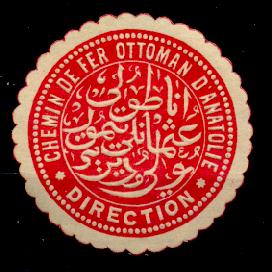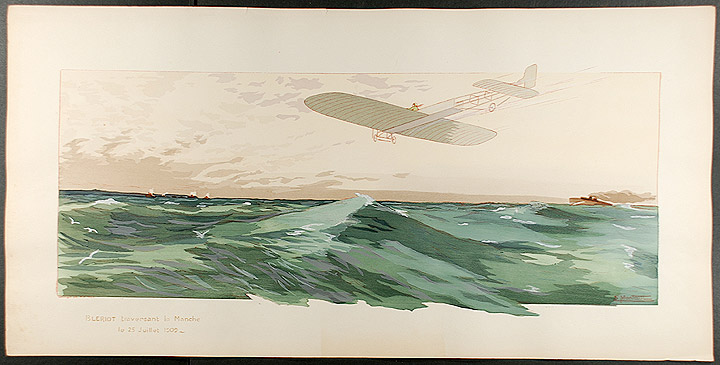|
Georg Kawerau
Georg Kawerau (born 12 December 1856, in Berlin; died 13 April 1909, in Stettin; full name: ''Georg Ferdinand Kawerau'') was a German architect and archeologist. Life Georg Kawerau was the seventh child of sports educator and church musician Martin Kawerau and his wife Emilie. He spent his early life in Berlin, where he received his primary and secondary education. Upon graduating from the Friedrich Wilhelm Gymnasium, a notable high school, he pursued studies at the Bauakademie, a prestigious construction school. Following his education, Kawerau became a government construction supervisor (''Regierungsbauführer'') within the garrison construction administration in the Pomerian city of Stargard. His career then took a turn due to health-related issues that led him to move to Greece and engage in archaeology. In 1885, Kawerau joined renowned archaeologist Heinrich Schliemann in excavations at Tiryns. Between 1885 and 1890, he collaborated with Panagiotis Kavvadias on significa ... [...More Info...] [...Related Items...] OR: [Wikipedia] [Google] [Baidu] |
German Archaeological Institute At Athens
The German Archaeological Institute at Athens (; ) is one of the 19 foreign archaeological institutes operating in Athens, Greece. General information, history, facilities The Athens department was the second department founded by the institute (after Rome) in 1874 and it is the second foreign institute in Athens (after the École Française d’Athènes). Part of the institute was established on May 17, 1872, and inaugurated on December 9, 1874. The construction of the building in which it is housed was funded by Heinrich Schliemann; the plans were made by Ernst Ziller and Wilhelm Dörpfeld. Today, it is one of several specialised departments that make up the German Archaeological Institute. With an ongoing research programme, an 80,000-volume library and a large photographic archive, the German Archaeological Institute at Athens remains a major contributor to Greek archaeology. Along with other foreign archaeological schools in Athens, it is a member of a large scientific co ... [...More Info...] [...Related Items...] OR: [Wikipedia] [Google] [Baidu] |
Anatolian Railway
The Chemins de Fer Ottomans d'Anatolie (, ), founded on 4 October 1888, was a railway company that operated in the Ottoman Empire.CFOA History - Trains and Railways of Turkey The company was headquartered in Istanbul. The CFOA was the busiest railway in the Ottoman Empire and was one of the two railways operating into Istanbul, along with the Chemins de fer Orientaux. The Baghdad Railway (Istanbul-Aleppo-Baghdad) connected with the CFOA at Konya to allow rail transport from Istanbul to the Middle East, although the Baghdad railway was not completed until 1940. The CFOA serviced major cities such as Istanbul, İzmit, Adapazarı, Bilecik, Eskişehir, Ankara, Kütahya and Konya. The railway also operated the Port of Haydarpaşa and the Port of Derince. The railway was a wholly owned subsidiary of the Société du Ch ... [...More Info...] [...Related Items...] OR: [Wikipedia] [Google] [Baidu] |
19th-century German Archaeologists
The 19th century began on 1 January 1801 (represented by the Roman numerals MDCCCI), and ended on 31 December 1900 (MCM). It was the 9th century of the 2nd millennium. It was characterized by vast social upheaval. Slavery was abolished in much of Europe and the Americas. The First Industrial Revolution, though it began in the late 18th century, expanded beyond its British homeland for the first time during the 19th century, particularly remaking the economies and societies of the Low Countries, France, the Rhineland, Northern Italy, and the Northeastern United States. A few decades later, the Second Industrial Revolution led to ever more massive urbanization and much higher levels of productivity, profit, and prosperity, a pattern that continued into the 20th century. The Catholic Church, in response to the growing influence and power of modernism, secularism and materialism, formed the First Vatican Council in the late 19th century to deal with such problems and confirm ce ... [...More Info...] [...Related Items...] OR: [Wikipedia] [Google] [Baidu] |
1909 Deaths
Events January–February * January 4 – Explorer Aeneas Mackintosh of the Imperial Trans-Antarctic Expedition escapes death by fleeing across drift ice, ice floes. * January 7 – Colombia recognizes the independence of Panama. * January 9 – The British Nimrod Expedition, ''Nimrod'' Expedition to the South Pole, led by Ernest Shackleton, arrives at the Farthest South, farthest south reached by any prior expedition, at 88°23' S, prior to turning back due to diminishing supplies. * January 11 – The International Joint Commission on US-Canada boundary waters is established. * January 16 – Members of the ''Nimrod'' Expedition claim to have found the magnetic South Pole (but the location recorded may be incorrect). * January 24 – The White Star Liner RMS Republic (1903), RMS ''Republic'' sinks the day after a collision with ''SS Florida'' off Nantucket. Almost all of the 1,500 passengers are rescued. * January 28 – The last United States t ... [...More Info...] [...Related Items...] OR: [Wikipedia] [Google] [Baidu] |
1856 Births
Events January–March * January 8 – Borax deposits are discovered in large quantities by John Veatch in California. * January 23 – The American sidewheel steamer SS ''Pacific'' leaves Liverpool (England) for a transatlantic voyage on which she will be lost with all 186 on board. * January 24 – U.S. President Franklin Pierce declares the new Free-State Topeka government in " Bleeding Kansas" to be in rebellion. * January 26 – First Battle of Seattle: Marines from the suppress an indigenous uprising, in response to Governor Stevens' declaration of a "war of extermination" on Native communities. * January 29 ** The 223-mile North Carolina Railroad is completed from Goldsboro through Raleigh and Salisbury to Charlotte. ** Queen Victoria institutes the Victoria Cross as a British military decoration. * February ** The Tintic War breaks out in Utah. ** The National Dress Reform Association is founded in the United States to promote "r ... [...More Info...] [...Related Items...] OR: [Wikipedia] [Google] [Baidu] |
Albert Rehm
Albert Rehm (August 15, 1871 (in Augsburg)- July 31, 1949 (in Munich)) was a German philologist best known for his work on the Antikythera mechanism - he was the first to propose that it was an astronomical calculator. Services Albert Rehm has made numerous contributions to both education and science. He has made important contributions to realism in particular: the volume Precise Sciences in the Introduction to Classical Philology by Alfred Gercke and Eduard Norden, as well as numerous essays and articles for the Realencyclopädie der classischen Altertumswissenschaft. He also wrote valuable works in epigraphy and archeology Archaeology or archeology is the study of human activity through the recovery and analysis of material culture. The archaeological record consists of artifacts, architecture, biofacts or ecofacts, sites, and cultural landscapes. Archaeolo ... . Literature He is mentioned in these books: References 1871 births Scientists from Augsb ... [...More Info...] [...Related Items...] OR: [Wikipedia] [Google] [Baidu] |
Alexander Conze
Alexander Christian Leopold Conze (10 December 1831 – 19 July 1914) was a German archaeologist, who specialized in ancient Greek art. He was a native of Hanover, and studied at the universities of Göttingen and Berlin. In 1855 he obtained his doctorate at Berlin as a student of Eduard Gerhard. In 1863 he became an associate professor at the University of Halle,Biography of Alexander Conze In: (NDB). Band 3, Duncker & Humblot, Berlin 1957, , S. 348 and from 1869 to 1877, he served as a professor of archaeology at the |
Constantinople
Constantinople (#Names of Constantinople, see other names) was a historical city located on the Bosporus that served as the capital of the Roman Empire, Roman, Byzantine Empire, Byzantine, Latin Empire, Latin, and Ottoman Empire, Ottoman empires between its consecration in 330 until 1930, when it was renamed to Istanbul. Initially as New Rome, Constantinople was founded in 324 during the reign of Constantine the Great on the site of the existing settlement of Byzantium, and shortly thereafter in 330 became the capital of the Roman Empire. Following the collapse of the Western Roman Empire in the late 5th century, Constantinople remained the capital of the Eastern Roman Empire (also known as the Byzantine Empire; 330–1204 and 1261–1453), the Latin Empire (1204–1261), and the Ottoman Empire (1453–1922). Following the Turkish War of Independence, the Turkish capital then moved to Ankara. Although the city had been known as Istanbul since 1453, it was officially renamed as Is ... [...More Info...] [...Related Items...] OR: [Wikipedia] [Google] [Baidu] |
Pergamon
Pergamon or Pergamum ( or ; ), also referred to by its modern Greek form Pergamos (), was a rich and powerful ancient Greece, ancient Greek city in Aeolis. It is located from the modern coastline of the Aegean Sea on a promontory on the north side of the river Caicus (modern-day Bakırçay) and northwest of the modern city of Bergama, Turkey. During the Hellenistic period, it became the capital of the Kingdom of Pergamon in 281–133 BC under the Attalid dynasty, who transformed it into one of the major cultural centres of the Greek world. Many remains of its monuments can still be seen and especially the masterpiece of the Pergamon Altar. Pergamon was the northernmost of the seven churches of Asia cited in the New Testament Book of Revelation. The city is centered on a mesa of andesite, which formed its acropolis. This mesa falls away sharply on the north, west, and east sides, but three natural terraces on the south side provide a route up to the top. To the west of the ... [...More Info...] [...Related Items...] OR: [Wikipedia] [Google] [Baidu] |
Miletus
Miletus (Ancient Greek: Μίλητος, Mílētos) was an influential ancient Greek city on the western coast of Anatolia, near the mouth of the Maeander River in present day Turkey. Renowned in antiquity for its wealth, maritime power, and extensive network of colonies, Miletus was a major center of trade, culture, and innovation from the Bronze Age through the Roman period. The city played a foundational role in the development of early Greek philosophy and science, serving as the home of the Milesian school with thinkers such as Thales, Anaximander, and Anaximenes of Miletus, Anaximenes. Miletus's prosperity was closely linked to its strategic coastal location and the productivity of its surrounding rural hinterland, which supported thriving agriculture and facilitated wide-ranging commercial activity. The city established dozens of colonies around the Mediterranean Sea, Mediterranean and Black Sea, significantly shaping the Ancient Greece, Greek world’s expansion. Archae ... [...More Info...] [...Related Items...] OR: [Wikipedia] [Google] [Baidu] |
Theodor Wiegand
Theodor Wiegand (30 October 1864 – 19 December 1936) was a German archaeologist. Wiegand was born in Bendorf, Rhenish Prussia. He studied at the universities of Munich, Berlin, and Freiburg. In 1894 he worked under Wilhelm Dörpfeld at the excavation of the Athenian Acropolis. From 1895 until 1899 he excavated the ancient Greek city of Priene, and from 1899 to 1911 he worked at Miletus. He took part in the excavations of the sanctuary of Didyma (1905–11) and of Samos (1910–11). In Pergamon he discovered, in 1927, the arsenals of the castle at the acropolis and excavated the large sanctuary of Asklepios outside the city. He also finished the excavations at Baalbek in Lebanon and published the results. From 1899 until 1911, he worked for the museums of Berlin as a foreign director in Constantinople, the capital of the Ottoman Empire, and was the science attaché of the German Embassy there. From 1912 to 1930 he worked as the director of the Department of Antiqu ... [...More Info...] [...Related Items...] OR: [Wikipedia] [Google] [Baidu] |






